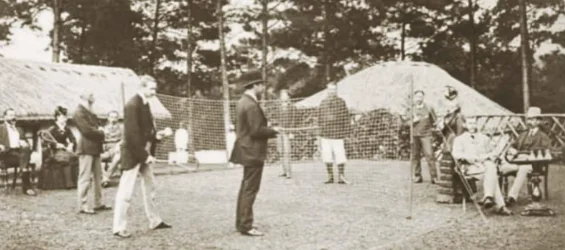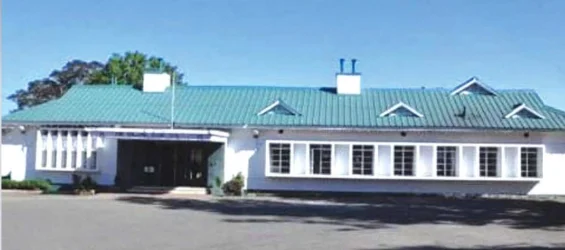The Shillong Club was established in a meeting of British Civil and Military officials and Tea Planters.
Mission and History
History & Legacy
The Shillong Club was established on September 7, 1878, in Shillong, which had become the headquarters of the Chief Commissionership Assam. The club was created to cater to the leisure and entertainment of the European population in the area. The club initially operated under a “white only membership policy,” reflecting the exclusivity and elitism prevalent in British colonial society. Its membership was restricted to Europeans who had entry to Government House, primarily military officers, tea planters, and covenanted civil servants.
In addition to the Shillong Club, two other clubs were established in the area. The Un-Covenanted Service Club, popularly known as the Kelsall Club, was established in 1882 for Europeans who did not belong to the elitist group. The Shillong Indian Club, founded in 1876, was open to Indian gentlemen from all communities. These clubs reflected the highly stratified colonial hierarchy, based on race and rank.



In addition to the Shillong Club, two other clubs were established in the area. The Un-Covenanted Service Club, popularly known as the Kelsall Club, was established in 1882 for Europeans who did not belong to the elitist group. The Shillong Indian Club, founded in 1876, was open to Indian gentlemen from all communities. These clubs reflected the highly stratified colonial hierarchy, based on race and rank.
The Shillong Club quickly became the center of European social life in Shillong. Its facilities included bar-rooms, card-rooms, a ballroom, billiards tables, and facilities for lawn tennis and badminton. The club also had a well-stocked library with over 12,000 books. Dances were a regular feature, and the club had its own band. A nine-hole golf course was developed, and later an 18-hole golf course was also established.
The club faced challenges throughout its history. The club buildings suffered significant damage in the earthquake of June 12, 1897, but were rebuilt under the supervision of Sir Henry Cotton, the Chief Commissioner at the time. A devastating fire in January 1927 destroyed the club building and its valuable books, paintings, and chandeliers. However, the club was reconstructed with additional facilities such as a provision store, barber shop, and laundry.



During World War II, the presence of British and American military units stationed in Shillong provided a financial boost to the club. The club hosted dances for the military personnel, and the highlight of social life during this period was the dances held on Wednesdays and Saturdays. The club also made significant contributions to war charities.
Following India’s independence in 1947, the Shillong Club faced financial difficulties and a decline in membership. Efforts were made to keep the club operational, including admitting honorary members, including Indians, to permanent membership. However, the number of European members declined as many of them returned to England. They were gradually replaced by Indians from the administrative elite, armed forces, and judiciary.
The Shillong Club suffered another fire in February 1962, but measures were taken to ensure that club activities could continue. The club building was insured, and work began on constructing a new building. The club celebrated its centenary in 1978 with a week-long celebration, including golf tournaments, dance competitions, and other events.
The Shillong Club, like many other gentlemen clubs in British India, was a symbol of racial exclusivity. However, over time, it began to adapt to changing circumstances and admitted honorary Indian members. Today, the club continues to operate in Shillong, providing recreational and social facilities for its members.
Milestones
September 7, 1878
April 1, 1894
The club entered into a fresh lease agreement with the government, specifying the purpose of the land and the allotted area.
June 12, 1897
A catastrophic earthquake caused significant damage to the club buildings, including the tennis courts and the Willans Monument.
January 10, 1927
A devastating fire destroyed the club building, along with valuable books, paintings, and chandeliers.
1933
Mr. Alban Ali, a member of the Imperial Police, became a permanent member and a member of the management committee. He was known as the "Flying Policeman" due to his passion for aviation.
1939 - 1945
The war years saw an increase in the club's popularity due to the presence of British and American military units stationed in Shillong. Dances and social events were held, and the club contributed to war charities.
August 22, 1945
The Victory Ball was held to celebrate the victory of the Allies over the Axis powers. It was a grand affair with dancing, performances, and a buffet.
January 29, 1947
An extraordinary General Meeting was held to consider the possibility of closing the club due to financial difficulties. The decision to close the club was rejected.
September 7, 1978
The Shillong Club celebrated its centenary with a week-long series of events, including golf tournaments, dance competitions, and fundraising activities.
For any queries call us (6009621305)
The Shillong Club Ltd – © 2024. All Rights Reserved
Privacy Policy / Terms of Use
